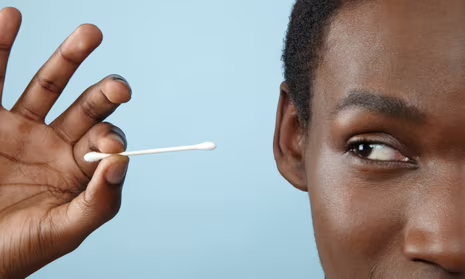The innocuous cotton bud, a staple in many households, harbors a hidden danger: the potential to inflict significant damage on our hearing. While offering a fleeting sensation of cleanliness, these seemingly harmless tools can wreak havoc within the delicate confines of the ear canal, potentially leading to hearing loss. This surprising reality stems from the vulnerability of the eardrum and the intricate workings of the inner ear.
The eardrum, a thin membrane separating the outer and middle ear, plays a crucial role in the hearing process. It vibrates in response to sound waves, transmitting these vibrations to the tiny bones within the middle ear. These bones, in turn, amplify the vibrations and send them to the inner ear, where they are converted into electrical signals that the brain interprets as sound. Inserting a cotton bud into the ear canal poses a direct threat to this delicate system. The force applied can easily rupture the eardrum, resulting in a conductive hearing loss. This type of hearing loss occurs not due to nerve damage, but rather a disruption in the transmission of sound waves to the inner ear. Essentially, the damaged eardrum is unable to effectively vibrate and transmit the sound.
Beyond the risk of eardrum perforation, cotton buds can exacerbate existing earwax buildup. Instead of removing earwax, the bud often pushes it further into the ear canal. Over time, this compacted wax can harden, forming a blockage that obstructs the passage of sound waves, again leading to conductive hearing loss. This accumulation mimics the formation of sedimentary rock, gradually layering and solidifying until it creates a significant barrier.
The allure of inserting objects into the ear often stems from an underlying itch or undiagnosed allergy. This discomfort can prompt individuals to use a variety of items, from brooms and feathers to pen caps and matchsticks, in an attempt to alleviate the sensation. However, these seemingly harmless actions can have devastating consequences, tearing the delicate eardrum and causing conductive hearing loss. The urge to insert objects is not driven by a desire to remove wax, but rather to scratch the itch or address the underlying allergic reaction.
The ear canal is rich in sensitive nerve endings, and stimulating these nerves can produce a sensation of pleasure. This explains why inserting a cotton bud, or other objects, into the ear can be so tempting. However, this seemingly innocuous act can quickly turn harmful, leading to eardrum perforation and subsequent hearing loss. The pleasurable sensation can mask the damage being done, creating a dangerous cycle of self-inflicted harm. Therefore, persistent itching should not be ignored; it’s a crucial signal to seek professional medical advice.
Cotton buds, contrary to popular belief, are designed for cleaning the outer part of the ear, the pinna, and not the ear canal itself. The pleasurable sensation derived from inserting them into the ear canal often leads to overuse and misuse, increasing the risk of injury. This pleasurable feedback loop can be deceiving, masking the potential for damage until it’s too late. Therefore, it’s essential to resist the urge to self-treat ear discomfort with cotton buds or other objects.
Earwax, often perceived as an unpleasant substance, actually plays a vital role in protecting the ear. It acts as a natural defense mechanism, trapping dust, debris, and other foreign particles that could otherwise reach the delicate eardrum. Furthermore, earwax possesses antibacterial properties and helps lubricate the ear canal, promoting overall ear health. Attempts to remove earwax with cotton buds can disrupt this natural protective barrier, increasing the risk of infection and other complications.
The irony lies in the fact that while attempting to maintain ear cleanliness, the use of cotton buds can actually increase the risk of impaction and discomfort. The fluffy tips of these buds can easily push earwax deeper into the canal, creating a blockage that leads to discomfort and potential hearing loss. This counterintuitive effect highlights the importance of understanding the natural function of earwax and the detrimental impact of interfering with its protective role.
When faced with ear discomfort, itching, or any other ear-related concern, the best course of action is to seek professional medical advice. A qualified Ear, Nose, and Throat (ENT) specialist can properly diagnose the issue and recommend appropriate treatment. Self-treating with cotton buds or other objects can exacerbate the problem and lead to irreversible damage. Prioritizing professional medical care is crucial for maintaining long-term ear health and preserving hearing. Resist the temptation to self-treat, and instead, entrust your ear health to the expertise of a qualified medical professional.














